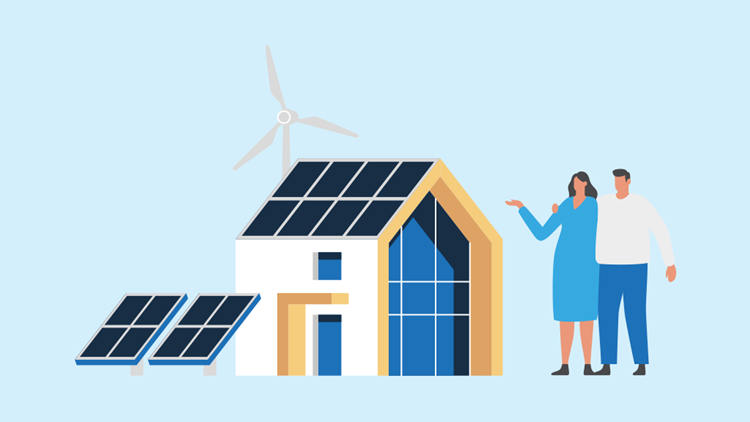Home Energy Credits Can Help Maximize Client Tax Savings

Are your clients aware that making energy-efficient upgrades to their homes could translate into significant tax savings? These credits, expanded by the Inflation Reduction Act of 2022, offer incentives to homeowners and renters alike for investing in energy improvements.
What Clients Need to Know About Home Energy Credits
Taxpayers can tap into two key credits: the Energy Efficient Home Improvement Credit and the Residential Clean Energy Credit. These credits are available for the tax year in which qualifying expenditures are made, presenting a golden opportunity to reduce tax burden while contributing to a greener planet.
While homeowners stand to benefit the most from these credits, renters and owners of secondary residences can also capitalize on eligible expenses. However, it's important to note that landlords are not eligible for these credits.
This is a prime opportunity for tax preparers to be proactive in explaining and introducing new ways for clients to boost tax savings. Before diving into home improvement projects, the Internal Revenue Service (IRS) advises interested taxpayers to familiarize themselves with the requirements and qualifications outlined on IRS.gov/HomeEnergy. Additionally, valuable information can be found on Energy.gov, including a comparison of credit amounts for tax years 2022 and beyond.
Energy Efficient Home Improvement Credit
Since January 1, 2023, qualifying taxpayers can get a tax credit of up to $3,200 for making qualified energy-efficient improvements to their homes. The Energy Efficient Home Improvement Credit is equal to 30% of certain qualified expenses and covers a wide array of enhancements, including:
- Exterior doors, windows, and skylights
- Insulation and air sealing materials or systems
- Residential energy property expenses such as water heaters, furnaces, and heat pumps
It's worth noting that this credit has specific limits for certain expenses, such as doors, windows, and home energy audits. Furthermore, the credit is nonrefundable, meaning it cannot exceed the amount owed in taxes for the year.
Residential Clean Energy Credit
Investing in clean energy solutions for a primary residence can also lead to substantial tax benefits. The Residential Clean Energy Credit offers a 30% credit on the costs of new, qualified clean energy property installed between 2022 and 2032. Eligible expenses include solar panels, wind turbines, geothermal heat pumps, and more.
Unlike the Energy Efficient Home Improvement Credit, there is no annual or lifetime dollar limit for the Residential Clean Energy Credit, except for fuel cell property. Taxpayers can claim this credit annually for eligible property installed between January 1, 2023, and January 1, 2033.
Claiming Home Energy Credits for Your Clients
When it comes time to file client tax returns, be sure to use Form 5695, Residential Energy Credits, to claim the credit for the tax year in which the property was installed. Good recordkeeping of purchases and expenses will facilitate the claiming process and ensure your clients receive the maximum benefit.
Don't miss out on these valuable tax-saving opportunities! Explore the world of home energy credits today and take proactive steps towards a more energy-efficient and cost-effective future.
This article is for informational purposes only and not legal or financial advice.




